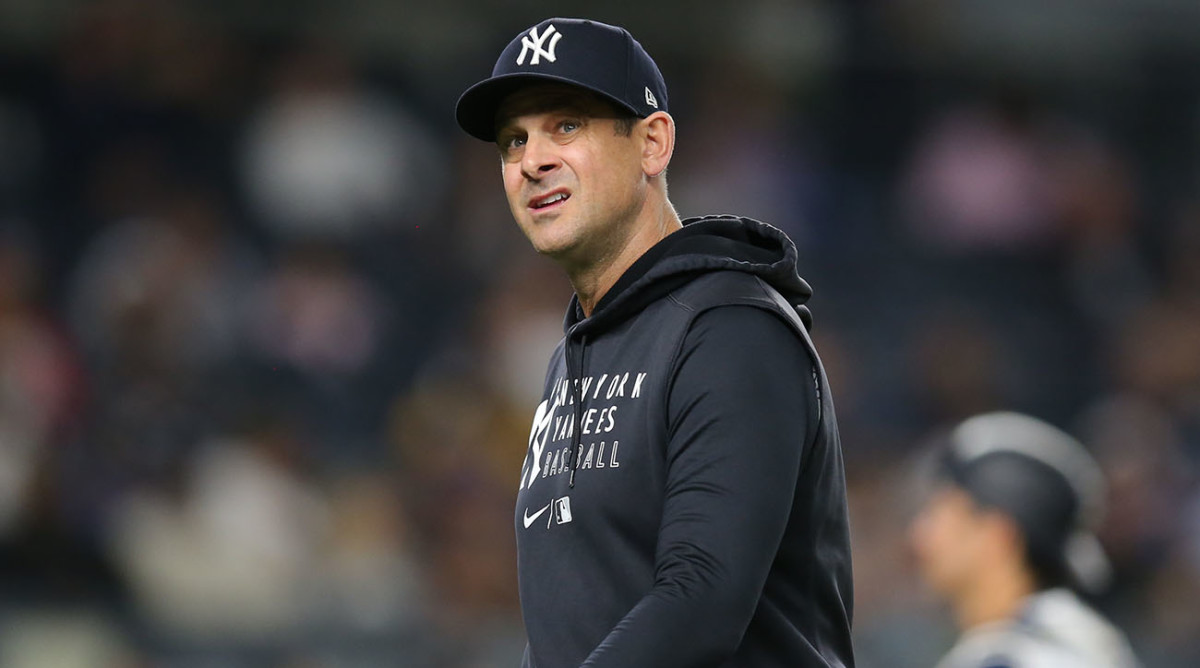Why Aren't the Yankees Acting Like the Yankees?

With the current lockout halting all player movement for the foreseeable future, the prevailing theme of the 2021 offseason to this point might best be described as hurry up and wait. Teams all knew that a work stoppage was likely coming, and they acted accordingly, with a flurry of big-ticket signings being executed earlier than usual before the league-wide “pencils down” went into effect at the expiration of the collective bargaining agreement.
As has been the case in many winters past, plenty of money has been spent on the free agent market from a certain team in the Big Apple. Plot twist—it’s not the Yankees.
For a long time under late owner George Steinbrenner, the Bronx Bombers carried the biggest checkbook in the room. They still carry plenty of financial clout under George's son, Hal, but have been rather miserly to this point. To date, the Yankees have spent a whopping $2 million on major-league free agents this offseason, all on relief pitcher Joely Rodríguez. Meanwhile, the team has lost free agents Corey Kluber, Andrew Heaney and Rougned Odor. Anthony Rizzo and Brett Gardner remain unsigned. Corey Seager, seen by many as the left-handed-hitting shortstop who'd fit like a glove in New York's righty-heavy lineup, went to Texas.
The Yankees’s penny-pinching ways are even more perplexing when juxtaposed with the free spending of their AL East brethren. The Blue Jays landed Kevin Gausman on a five-year, $110 million deal; Boston added rotation depth with the signings of Michael Wacha, Rich Hill and James Paxton; and the Rays added Kluber and signed phenom shortstop Wander Franco to a $185 million extension (nevermind the Orioles, who are simply trying their best).
And then, of course, there are the Mets, who in the span of a few hours spent over $124 million to land Starling Marte, Eduardo Escobar and Mark Canha. That nine-figure splurge ended up being merely an appetizer for the mega-deal to sign Max Scherzer, who will make $130 million over the next three years. It wasn’t long ago that the Yankees made history by signing Gerrit Cole to make him, at the time, the highest-paid pitcher in the history of the game. Now, their lack of spending is downright Oaklandian.

For the better part of MLB history, the Yankees outspent their competition so thoroughly to the point that—alongside their consistent winning—their brand was built upon having deeper pockets than just about anybody else. Their most famous transaction, which occurred more than 100 years ago, involved them purchasing their fiercest rival's best player. Many a baseball movie has adorned its villains with those iconic pinstripes, perhaps none more overtly (or more financially focused) than 2011’s Moneyball, which presents the Yankees as a Death Star-esque machine that aims to bury its opponents under moneybags and harvest their organs for future use (not a wholly inaccurate portrayal).
The reason the team’s inactivity to this point must be all the more frustrating to its fans is that the gap between the Yankees and the game’s elite teams is only getting wider. In a division that featured four 90-game winners last season, three of them have made consequential acquisitions to this point. There’s certainly still time (if and when the lockout is resolved) and plenty of big names still on the board, but the feeling of falling behind the competition is not something this franchise has grown accustomed to.
Maybe the Yankees render all of this moot by landing Carlos Correa or Trevor Story, or by swiping Freddie Freeman from Atlanta, or signing Japanese star outfielder Seiya Suzuki. There are a number of potential routes that would swiftly shift the narrative and keep New York firmly in the mix of what’s likely MLB’s toughest division.
For now, as the players and owners work out their numerous differences, the clock is frozen. Soon enough, though, the ticking will begin again, and with it the pressure on baseball’s most storied franchise will only continue to build.
More MLB Coverage:
• Lingering Questions As MLB Lockout Puts Game on Hold
• Inside Baseball's Dangerous Game of Chicken
• Our No-Nonsense, Cut-the-Crap Guide to MLB's Labor War
• Rankings and Predictions for MLB's Top 50 Free Agents
• Braves Risk Wasting a Ready-Made Repeat Opportunity
